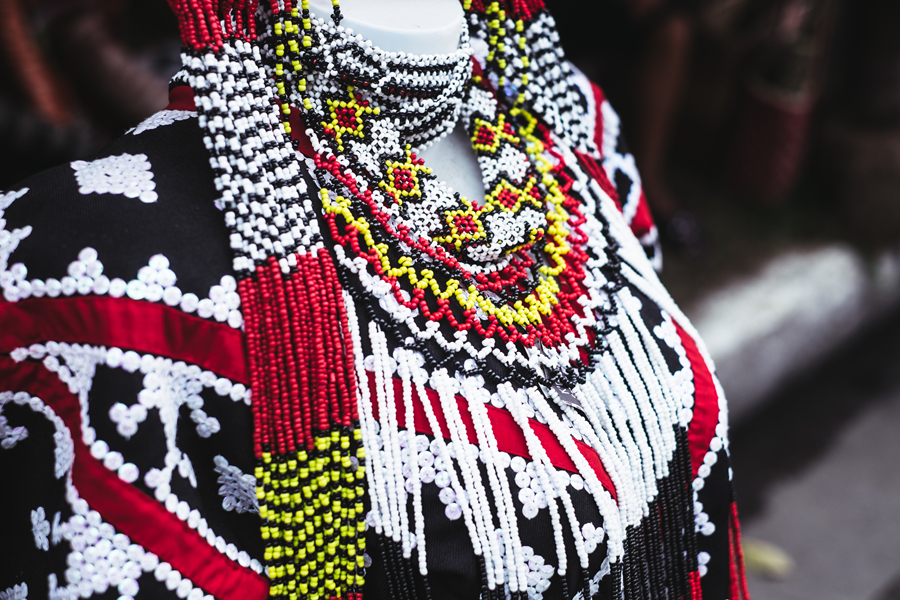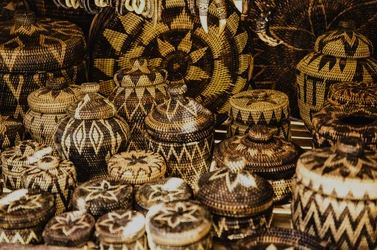Indigenous handicrafts in Palawan are not just souvenirs; beyond the Bazaar Authentic Indigenous Crafts they are intricate pieces of art that carry the rich cultural heritage of the indigenous communities.

These handmade items embody the creativity, craftsmanship, and rich traditions that have been passed down through generations. Each piece tells a unique story, showcasing the skills honed over time by artisans who preserve their cultural heritage. These crafts are not just objects; they are expressions of history and artistry, carefully crafted with attention to detail. From intricate designs to the use of traditional materials, these items are a celebration of creativity and a testament to the enduring legacy of skilled hands. Each one carries with it a piece of the past, beautifully woven into the present.

Here’s a detailed description of indigenous handicrafts in Palawan, each telling a unique story:
1. Beaded Accessories:
- Materials:
- Beads, often made from natural materials like seeds, shells, and stones.
- Description:
- Indigenous communities in Palawan craft beaded accessories such as necklaces, bracelets, and earrings.
- Each bead carries cultural significance, with patterns and colors representing stories, traditions, and beliefs.
2. Tribal Weaving:
- Materials:
- Indigenous fibers, like nito (a type of rattan), abaca, and buri palm.
- Description:
- Skilled artisans weave intricate patterns into baskets, mats, and bags.
- The designs often depict symbols and motifs inspired by nature, folklore, and spirituality.
3. Woodcarving:
- Materials:
- Local hardwood, such as narra and molave.
- Description:
- Woodcarving is a traditional craft producing sculptures, figurines, and functional items like bowls and utensils.
- Artisans carve intricate patterns and representations of local flora, fauna, and ancestral spirits.
4. Pandanus Crafts:
- Materials:
- Pandanus leaves, dyed with natural pigments.
- Description:
- Indigenous communities skillfully weave pandanus leaves into a variety of items, including bags, hats, and mats.
- The vibrant colors and patterns often symbolize aspects of nature and local life.
5. Capiz Shell Products:
- Materials:
- Capiz shells, a translucent shell found in the region.
- Description:
- Artisans create lamps, chandeliers, and decorative items using capiz shells.
- The shells are meticulously arranged to form beautiful patterns, casting a unique glow when illuminated.
6. Bamboo Crafts:
- Materials:
- Bamboo, a versatile and sustainable resource.
- Description:
- Bamboo is used to craft a wide range of items, from furniture and utensils to musical instruments.
- Artisans skillfully incorporate traditional designs and techniques into these functional and artistic pieces.
7. Abaca Fiber Products:
- Materials:
- Abaca, a strong and durable fiber derived from the abaca plant.
- Description:
- Indigenous communities produce various items, such as bags, hats, and home decor, using abaca fibers.
- The weaving techniques and patterns showcase the expertise of the artisans.
8. Dreamcatchers:
- Materials:
- Hoops made from local vines, adorned with feathers, beads, and threads.
- Description:
- Inspired by indigenous traditions, dreamcatchers are crafted to catch and filter dreams.
- The feathers and beads often have symbolic meanings, reflecting the artisan’s connection to nature and spirituality.
9. Shell Jewelry:
- Materials:
- Shells sourced from local beaches.
- Description:
- Artisans create intricate jewelry pieces using shells, including earrings, necklaces, and bracelets.
- The designs often mirror the beauty of marine life and are a nod to the coastal heritage of the communities.
10. Cotton Textiles:
- Materials:
- Locally grown and processed cotton.
- Description:
- Indigenous weavers produce textiles with traditional looms, creating fabrics used for clothing and home decor.
- Patterns and colors often have cultural significance, telling stories of the community’s history and beliefs.
Tips for Purchasing Indigenous Handicrafts:
- Buy Directly from Artisans: Whenever possible, purchase handicrafts directly from local artisans or community cooperatives to ensure fair compensation.
- Learn the Stories: Take the time to learn about the stories and meanings behind the handicrafts. Artisans are often eager to share the cultural significance of their work.
- Support Sustainable Practices: Look for products made using sustainable materials and eco-friendly practices, supporting the preservation of local environments.
- Respect Cultural Sensitivities: Be mindful of the cultural significance of certain symbols and patterns, respecting the traditions and beliefs of the indigenous communities.
Indigenous handicrafts in Palawan are not just beautiful mementos; they are gateways to the cultural tapestry of the region. Each piece carries a story, a connection to nature, and the skillful artistry of the communities that have thrived in harmony with their environment for generations.

When you bring home these souvenirs, you carry with you a piece of Palawan’s rich cultural heritage and the heartfelt efforts of its talented artisans.

